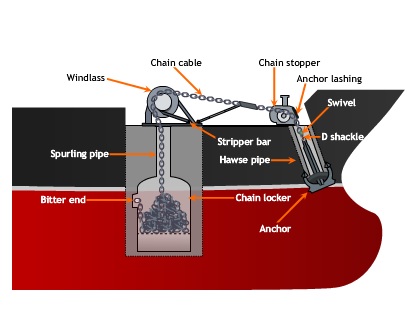
Deep water anchoring safe practice by VLCC
VLCCs, because of their inertia, requires excellent caution while anchoring.
They can suffer equipment failure if attempting to anchor while moving at speeds as low as half a knot over the ground.
Hence, the vessel must be nearly stopped not only in the linear direction but axial, too, meaning the bow should not be swinging much either while anchoring.
The depth at which the vessel can safely anchor is about 110m or less, beyond which the windlass may have extreme difficulty in recovering the anchor.
"Anchoring into Deepwater," defined as the depth of water, is beyond 50 meters, must be carried out with "Walk-back Style. However, on the VLCC operation, there exists such significant inertia; Master can treat it with Walking-back style even in the anchorage where water depth is less than 50m. Walking back chains is more sensible, especially when the forecast shows strong wind/current in a high-density anchorage or anchorage with restricted area. Indistinct depth of water or nature of sea bed may also influence a master's decision.
"Anchoring into Deepwater," defined as the depth of water, is beyond 50 meters, must be carried out with "Walk-back Style. However, on the VLCC operation, there exists such significant inertia; Master can treat it with Walking-back style even in the anchorage where water depth is less than 50m. Walking back chains is more sensible, especially when the forecast shows strong wind/current in a high-density anchorage or anchorage with restricted area. Indistinct depth of water or nature of sea bed may also influence a master's decision.



